Wood burning/Multi-fuel vs Electric: a comparison
Last updated on 26/05/2023
You may be considering installing a stove in the near future. The options are considerable with various types of stoves on offer. Even on those cool evenings the warmth of a fire can be a welcome feature of your living space.
Both wood burning/multi-fuel and electric stoves are an excellent choice but for different reasons. Let me summarise and compare the two options. What is right for you will depend on your preference and personal needs for your home.
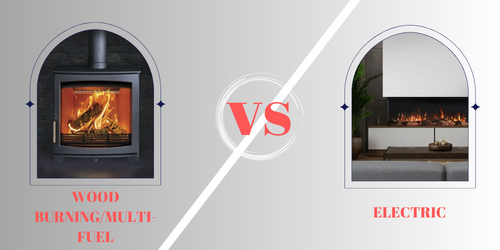
Wood burning/Multi-fuel
The wood burning stove gives you that authentic, direct heat experience but comes with some concerns about its impact on the environment. An aesthetically pleasing choice for those who want to hear the pop and crackle of real wood, coal or turf and the authentic flame feel.
The wood burner or multi-fuel is a fail-safe if you have the misfortune of a power cut and electricity is unavailable. Running costs can be low if you have a steady supply of wood nearby. If you have the ability to chop your own wood and store it, then costs will remain relatively small in comparison to a stove dependent solely on an electricity supply.
Wood burners and multi fuels, perhaps surprisingly, have low carbon emissions but are high in particle emissions. Burning wood has the lowest carbon intensity of any domestic heating fuel. What you burn, not how you burn, is key to keeping your stove from polluting the atmosphere.
Ensuring that the wood you burn is low in moisture content will garner the most efficient heating results. Therefore, it is important to burn only seasoned wood (moisture content no more than 20%).
The following diagram shows the correlation between moisture content and heat output (kWh).
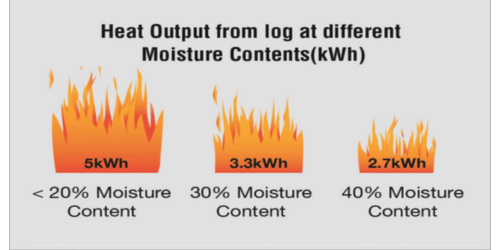
A traditional wood burner or multi-fuel will require a fair amount of upkeep. If you do not have a dedicated storage area to keep your wood dry, then you will need to find one nearby your fireplace or make some room in your living/sunroom for one. Additionally, you cannot just flick a switch and have a roaring fire. This will take time to light, and ash will need removed before you begin.
Overall, a wood burning or multi-fuel is the right choice if you want to generate intense levels of heat for your room, you have the capacity for burning wood and coal and enjoy the aesthetic of a real fire powered by earth’s natural materials. On the other hand, the alternative of an electric stove may appeal to those who want a fuss free heating option, one that does not require continual maintenance.
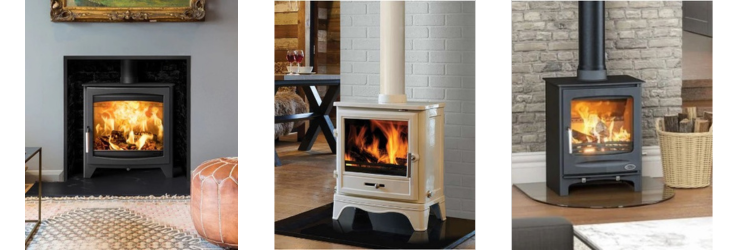
Electric
Electric stoves are the new kid on the block. They are not as well known or as trusted as the traditional choice, but they are making an impact in the stove industry. An electric stove is ideal for newly built houses where heat is retained much more efficiently. A contemporary stove will fit right in with a modern home and offers some unique benefits.
Firstly, you have great flexibility. An electric stove can be placed anywhere you have a plug socket. It is also easy to install, in most cases it can be as simple as flicking a switch on the wall. What sets this modern stove apart is that you can customise your fire to suit your needs.
Our Solus Vision E-Line range has a number of unique characteristics. You can control your stove manually, via a remote control and even through their app. The possibilities are endless, you could even turn your stove on when you are not at home.
You are in control of every aspect, from the speed, colour, and brightness of the entrancing flames to the enchanting crackling sounds of burning logs, or the complementing ambient lighting of your extended living space.
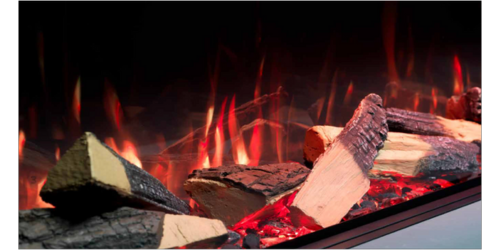
Compared to wood burning stoves, electric does not pack the same punch when it comes to heat output. Most electric stoves produce no more than 2kW, while a wood or multi-fuel can produce anything from 5 to 12kW. The Solus VS75 electric fire produces a small 1.8kW in comparison to a Henley Sherwood 8kW stove.
An electric heating system also incurs higher running costs. Electricity is much more expensive today than gas or wood. Coupled with low heat output, it could become a costly endeavour to heat your living area with an electric stove.
Not only that, regardless of the advancements in technology, ultimately it is less realistic looking than a traditional stove. The high-end models mimic the movement of flames well but are an expensive option. Nothing beats the feeling of a real wood fire.
That being said, electric fires are 100% efficient as electrical energy is converted into heat. There is no danger of heat loss from a chimney or flue and all the heat generated will filter through your room. On average a traditional wood or pellet burner will only be 75-80% efficient. Whatever heat is generated from your electric fire will be not be wasted.
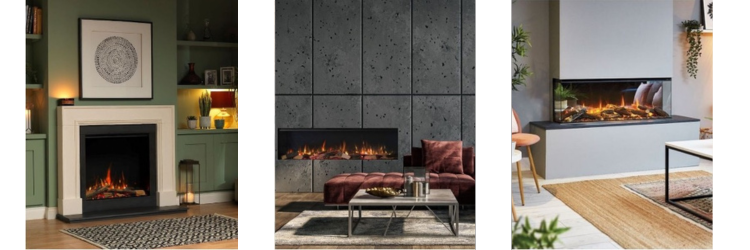
Both wood burning/multi-fuel and electric stoves have their benefits. The former produces the authentic, aesthetic fireside experience, while the latter aims to please the on-the-go person seeking a hassle free, easy to use, ambient atmosphere in their home.
Of course, if you are in doubt about the heating requirements for your home then visit our stove showroom and speak to someone who can offer advice on what is best for you.
For a look at our wood burning, multi-fuel and electric stoves click the links.
We also sell fireplaces, cladding, chamber beams and fireside accessories. Click here to see our entire stoves & fireplaces collection.
Back To Blog